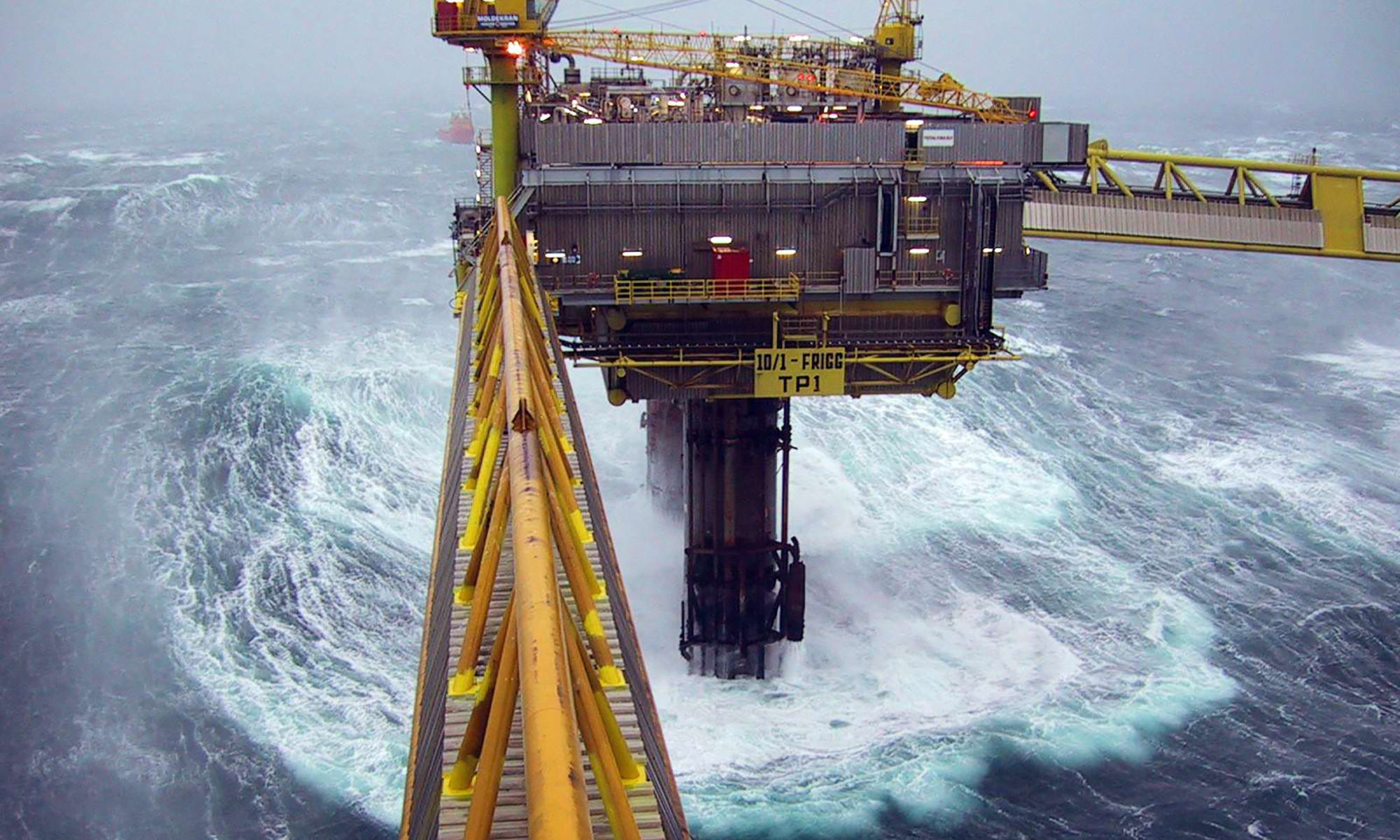TP1 comes on stream

Three parallel trains for gas dewatering were installed, each comprising a gas/liquid separator, a gas dewatering unit (glycol contactor), a glycol regeneration unit and a metering station. Each train had a daily capacity of 15 million standard cubic metres. Two of the trains were operational at any given time, with the third in reserve. Liquids separated from the gas were treated in a separator to remove water from the condensate.
The TP1 and TCP2 treatment platforms had a double function. Gas from CDP1 was normally transported via TP1 through the Frigg UK Pipeline to Scotland, while gas from DP2 went via TCP2 to the Frigg Norwegian Pipeline. But flowlines linking the two treatment platforms allowed gas from TP1 to be exported via TCP2 and vice versa. This provided full flexibility in the event of a possible production shutdown on one of the platforms. Since TP1 was a pure gas facility, the concrete cells in its gravity base structure were not used for intermediate storage of oil.
This installation came on stream in September 1977, when gas began to flow from CDP1. Britain’s Alwyn field was tied into TP1 in November 1987 through a 24-inch gas pipeline in order to provide onward transport through the Frigg UK Pipeline. TP1 was converted in 1990 to a riser platform, and the gas processing plant was shut down. The FP flare platform tied to TP1 was removed after processing ceased on the latter installation.
St Fergus receiving terminal comes on linePhase I – first gas from Frigg